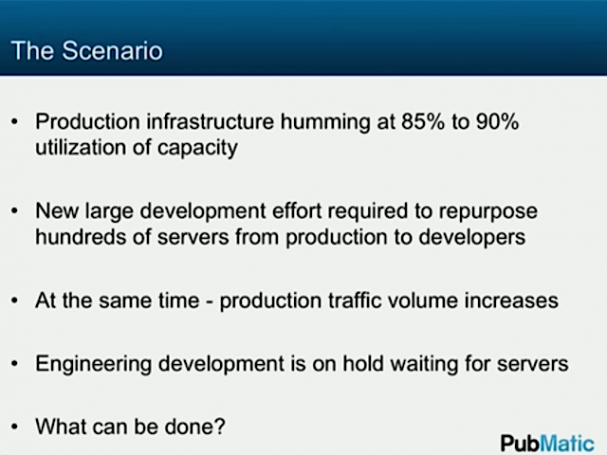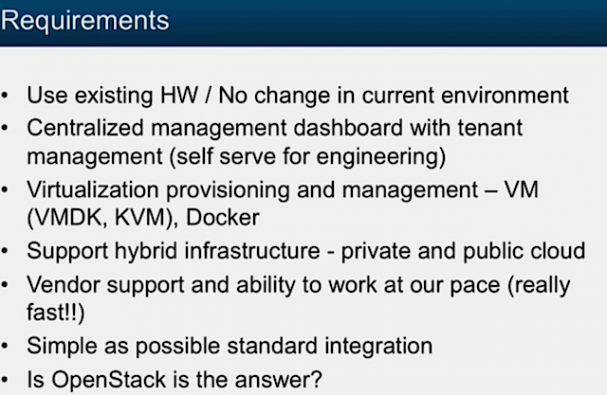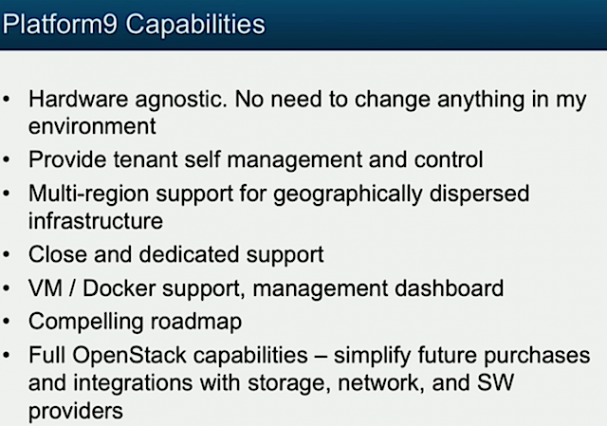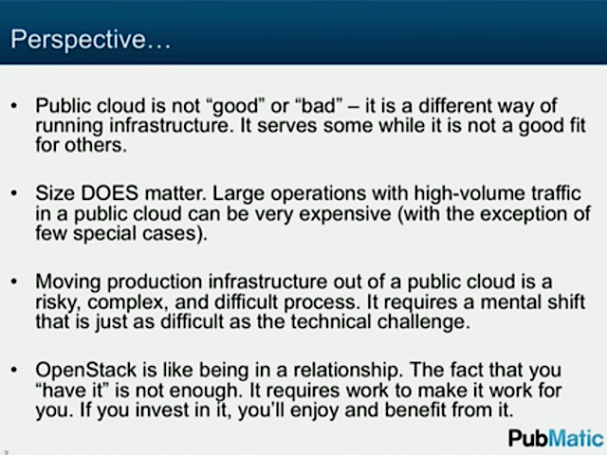PubMatic, a marketing automation platform for advertising publishers that prides itself in providing real-time analytics to their users, first built their advertising platform on the AWS public cloud. Soon after, they found themselves spending up to 18 times what they budgeted because of their high volume of data, high volume of network traffic that required a constant threshold of performance and large analytic system that consisted of thousands of nodes.
Udy Gold, PubMatic’s VP of data center and cloud operations, found himself in an awkward position. As the monthly cost for the public cloud soared to $400,000 and higher, PubMatic’s CFO kept knocking on Gold’s door to ask how he planned to solve the budgeting nightmare.
While he jokes about hiding under his desk to avoid the questions, Gold compares his experience with the public cloud to the most expensive taxi cab ride of his life. Gold once landed at 3 a.m. in Mumbai tired, sick and hungry and the driver he scheduled did not wait to pick him up. What should have been an easy taxi ride to his hotel ended up with a price tag 20 times what it should have been. Gold knew before he got into the rickshaw early that morning that he was being ripped off, but he climbed in anyhow.
“Sometimes you know what you start,” Gold said. “And sometimes you know why you even start it. I knew why I got into this rickshaw. I needed to get to a bed. But, you never know how it will end. And when you go to the public cloud, that’s exactly this.”
Here is the scenario that Gold was faced with at PubMatic, which he shared at the OpenStack Summit in Austin:

He knew that with the public cloud he was getting hardware, network and dashboard management, but there were a number of things he wasn’t getting that he needed. Some of these were:
- Operating system installation and management
- Network architecture and design
- Security and patches
- Ownership and responsibility
- Application deployment and support
- A complete data center
Gold laid out the requirements his team had when moving from a public cloud to a hybrid cloud and determining if OpenStack was the answer:

PubMatic did decide to switch to a private cloud with OpenStack and were able to create a data environment that allowed them to provision, configure, deploy and manage their own infrastructure; create a self serving environment that could be controlled by the data team instead of opening a ticket with corporate IT or the data center team to get more hardware and more VMs; and ultimately save them a ton of money.
For Gold and PubMatic, the private cloud through OpenStack was the best solution. But Gold stressed that “cloudhopping” from public to private cloud is not something he is recommends to every company. Gold said in his presentation that it’s important to evaluate what will work best for your company’s individual scenario and data team. PubMatic teamed up with startup Platform9 Systems, here are the requirements he went to the Sunnyvale-based company with:

They worked together to develop the current system for PubMatic, in which Platform9 handles its private cloud and PubMatic maintains some public cloud services itself. He outlines the journey from data center to hybrid data center with a public cloud as personal one — not a black-and-white case of best practice.
“Public cloud is not good or bad. For some it works really well, for others it doesn’t work at all for a variety of reasons.”
If your company is trying to decide about using the public cloud versus a private cloud with OpenStack, there are several factors to keep in mind that Gold spelled out:

You can catch additional details from PubMatic’s experience in the 37-minute talk on the OpenStack Foundation Summit site.
Cover Photo // CC BY NC
- How PubMatic saved millions by cloudhopping with OpenStack - July 20, 2016

)







